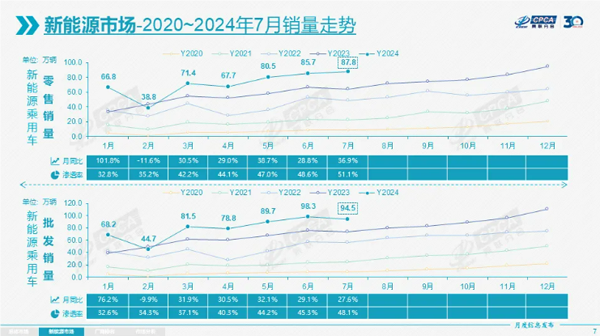The new energy transformation competition is more than half! Fuel trucks enter the

Since the advent of new energy vehicles, the saying that fuel vehicles have been eliminated has continued to ferment.
Of course, there are mixed reviews.
Some people say it is a good thing to overtake on the curve and change the era when internal combustion engines are monopolized; some people say it is a new type of energy, which costs less and can improve the driving experience, which is a good thing. At the same time, some people say that the technology of internal combustion engines for a century is paramount, they like roars and not the sound of current; some people say that new energy vehicles do not have technical content and are large "battery cars" and are not optimistic about it...
But who would have thought that in this kind of doubt, the market structure of China's automobile industry has undergone earth-shaking changes. China has been controversial and recognized on the road to new energy vehicles until it reaches the forefront of the world.
I didn't feel the water dripping through the stone, but it was out of control.
The road is over, and fuel vehicles are like the "Nokia" in the intelligent era
"I can't go back after driving the tram."
This sentence should have become a consensus among veteran drivers today.
In the era of traditional fuel vehicles, the core components are precision components such as engines and transmissions, and the technical core behind them is often in the hands of countries such as Germany and Japan that have precision industrial manufacturing capabilities. This is why China's early years of fuel vehicle sales Most of the list are overseas joint venture models.
At that time, although China's automobile industry had already had a large scale, there was indeed some gap in the overseas automobile industry's century-long accumulation.
However, from a technical perspective, the power structure of traditional fuel vehicles has basically reached a bottleneck, especially for some mainstream joint venture models. A stable engine can even be used for 10 or 20 years, and the facelift is also a modification. The concept of "squeezing toothpaste" has been fully applied to the design of the exterior and interior, and the functional configuration of adding and decreasing points has been fully utilized.
Of course, in the early years, most of the user's needs were just "solid and durable, worry-free and easy to open".
But with the changes of the times, the essence of the automobile industry is also changing to the era of informatization and intelligence. This is also the most obvious change in new energy vehicles compared to traditional fuel vehicles. No matter how fuel vehicles develop, they are still mechanical products. It meets the needs of the times, just like the functional machine of the intelligent era, is destined to be the product of the times.
Relying on the core three-electric technology, new energy vehicles have completely overwhelmed traditional fuel vehicles in terms of performance, driving experience, intelligent performance, user experience, economy and other aspects. Especially the plug-in hybrid technology represented by BYD DM, which integrates fuel, plug-in, extended range and pure electric functions. Joint venture fuel vehicles are becoming increasingly difficult to gain recognition from Chinese consumers, and even if you lower the price, you will not get it. Favor.
At present, the sales of domestic joint venture fuel vehicle terminals can be described as a failure, especially the decline of Japanese automakers is above double digits. Data from the China Passenger Car Association shows that from 2020 to 2023, Japanese cars in China had a market share of 24.1%, 22.6% and 17.0% respectively. The downward trend is very obvious. The retention rate of fuel vehicles has dropped rapidly and the prices of used cars collapsed.
In fact, with the hot sales of new energy vehicles such as BYD, Qin, Dolphin, Han, and Song, relying on technical generation differences to form a "technical suppression" on fuel vehicles, Lavida, Sylphy, Camry and CRV markets, once a "nail owner" The models have long been squeezed out of the top spot.
In addition, consumers' psychological awareness and acceptance of new energy vehicles are constantly rising, and more and more young people's "brand beliefs" have collapsed with the wave of electrification and rational consumption trends, and they are blind to luxury brands and joint venture brands. The pursuit disappeared, and the idea of relying on LOGO to harvest young people is obviously not feasible.
Faced with domestic new energy vehicles with lower prices, cheaper car use costs and smarter user experience, the joint venture brand has quietly failed. Consumers are not fools. Nowadays, consumption downgrades tend to be more expensive to buy better products. Why not?
Overcome obstacles and constantly witness the milestone of the development of new energy vehicles
From nothing to something, from weak to strength, the era of new energy vehicles is coming rapidly.
In March this year, BYD Chairman Wang Chuanfu predicted that the market penetration rate of new energy vehicles will exceed 50% in the next three months, replacing traditional fuel vehicles and becoming the mainstream of the market. At that time, many people thought this prediction was too radical, after all, the market penetration rate of new energy vehicles in 2023 was only 31.6%.

But the fact is that in the first two weeks of April this year, China's weekly penetration rate of new energy vehicles reached 50% for the first time, and after just three months, the penetration rate of new energy vehicles officially exceeded 50% in July. From week to month, electrification has been It has become an irreversible trend. Each of us is witnessing history and the milestones set by the step-by-step development of China's new energy vehicles.
The so-called penetration rate is a comparison of the potential market. The 50% penetration rate means that for every 2 cars sold in China, one is a new energy vehicle. People who buy fuel vehicles become "minority" for the first time. More than half of the energy transition competition has become a fact. This is a key data. Judging from the development history of most new things in the past, more than half of the penetration rate is enough to influence consumers, growing rapidly like smartphones back then.
Looking at the trend, why can the penetration rate of new energy vehicles continue to increase?
Is the oil price too expensive? Or are new energy vehicles given green license plates or no traffic restrictions? Obviously not.
Objective factors such as high oil prices and policy support have indeed promoted the rapid development and growth of China's new energy vehicle market, but behind it is also inseparable from the silent efforts of Chinese independent brands in the automobile industry. The only reasonable explanation for the continuous increase in penetration rate is that compared with fuel vehicles, the comprehensive product strength of new energy vehicles has been surpassed to a certain extent. In this process, BYD is the most vigorous "revolutionary" and has been doing difficult and right things.

In May this year, BYD launched the 5th generation DM technology called the "Industrial Miracle". Its range can reach 2,100 kilometers under full fuel and full charge, bringing global hybrid technology to a new height, and this technology was quickly Applied to BYD's product lineage.
In July this year, my country sold 991,000 new energy vehicles, and BYD sold 340,000 vehicles. In the process of China's new energy vehicle penetration rate exceeding 50%, BYD accounted for more than one-third of the contribution to accelerate the replacement of fuel for new energy. The car provides strong support.
Looking back at the history of global hybrid technology, when BYD launched its first DM plug-in hybrid car, the F3DM model in 2008, Toyota's first gasoline hybrid car had been on the market for several years. After four generations of technological innovation, BYD has established the mainstream position of plug-in hybrid technology in the hybrid field, and has broken the Japanese technology monopoly on the hybrid route with its own strength, promoting the large-scale plug-in hybrid market in China. break out.
Since BYD DM plug-in hybrid series models were sold, domestic independent brands including Geely, Chery, Great Wall have also increased their plug-in hybrid technology and models, fighting side by side with BYD, promoting the rapid development of the entire market and constantly eroding the market of joint venture fuel vehicles. Share.
New energy vehicles are a historic opportunity for the development of China's automobile industry and a must-have road to becoming a automobile power. In the future, the entire Chinese independent brand new energy vehicle camp will inevitably lead to the loss of joint venture fuel vehicles.
The electric wave is not only popular in the local area, but also proved overseas.
On May 24, 2014, General Secretary Xi Jinping emphasized during his inspection and investigation in Shanghai that the development of new energy vehicles is the only way for my country to move from a major automobile country to a strong automobile country. We must increase R&D efforts, carefully study the market, make good use of policies, and develop Products that adapt to various needs make it a strong growth point.

In the past ten years, my country's new energy vehicle sales jumped from about 75,000 in 2014 to 9.495 million in 2023, and the new energy penetration rate exceeded 50% in July 2024, which was 11 years ahead of the national plan.
The cultivation and growth of modern industries cannot be separated from corporate participation and market promotion, and also from strategic guidance and policy support. According to incomplete statistics, my country has formulated and issued more than 70 new energy vehicle industry policies and measures, covering more than 10 aspects such as strategic planning, scientific and technological innovation, investment management, production access, financial subsidies, and infrastructure.
Recently, the country has increased subsidies for automobile scrapping and renewal, and has provided strong guarantees for the popularization of new energy vehicles in various aspects such as the construction of new energy vehicle infrastructure and tax incentives.
A strong automobile country is the first to strengthen the foundation. The foundation is the industrial chain. After years of development, China's new energy vehicles have already had a very excellent "growth environment". From battery raw materials to new energy vehicle parts, to the Internet ecology, the entire industrial chain promotes the process of electrification and intelligence, and forms a complete industrial chain system. . With the continuous increase in the production of new energy vehicles, the scale effect gradually emerges and production costs are reduced, which further promotes the market competitiveness of new energy vehicles.
It is worth noting that with the continuous innovation of new energy vehicles and battery technologies, more and more overseas consumers have turned their attention to Chinese new energy vehicles. In the wave of electrification of the global automobile industry, China's new energy vehicle brands and their products are accelerating their travel abroad and actively exploring new routes for globalization.
In 2023, China ranked among the world's largest automobile exporter with a record of 4.91 million vehicles. Among them, BYD's overseas new energy passenger car sales exceeded 240,000, a year-on-year increase of 337%, becoming the Chinese brand with the largest export of new energy vehicles in 2023. According to the latest data from the China Association of Automobile Manufacturers, my country exported 708,000 new energy vehicles in the first seven months of this year, an increase of 11.4% year-on-year. Among them, BYD exported 238,000 vehicles, an increase of 1.4 times year-on-year, close to the annual export volume last year.
The era of new energy vehicles not only makes my country's automobile companies among the top ten in the world, but also realizes the reverse output of China's automobile industry for joint ventures. In 2024, my country's automobile companies will continue to focus overseas, and more new energy vehicles will be exported around the world. Help global energy transformation.
Conclusion: Data from the Ministry of Public Security shows that as of the end of June, the national new energy vehicle ownership has reached 24.72 million. Now, the monthly penetration rate exceeds 50% means that China's new energy vehicles have officially entered the period of rapid growth. Looking back, this new energy battle has gradually developed from policy-driven to product-driven, and has grown from early chicks to big roc soaring in the sky. Behind it, it is inseparable from the country's strategic planning and autonomy. The efforts of car companies.
In the future, in the field of electrification and intelligence, the strong performance of China's new energy vehicle market will continue to improve the competitiveness of China's automobile industry in the global automobile market, and the competitive landscape of the global automobile market will also undergo profound changes.




 Add WeChat
Add WeChat

